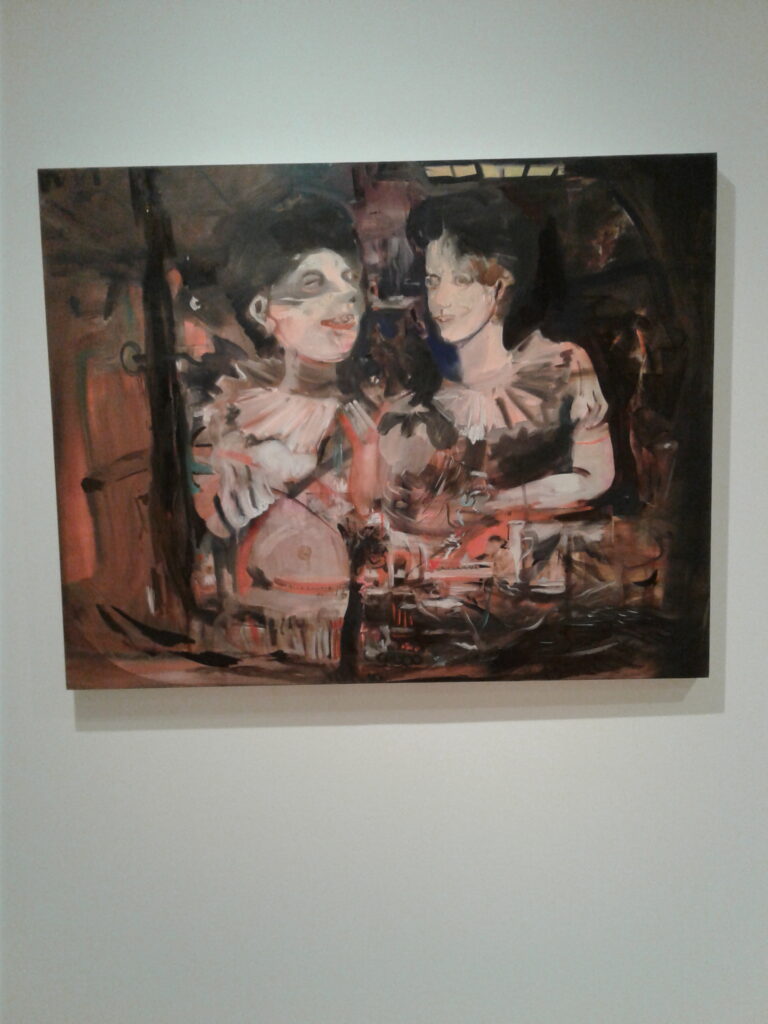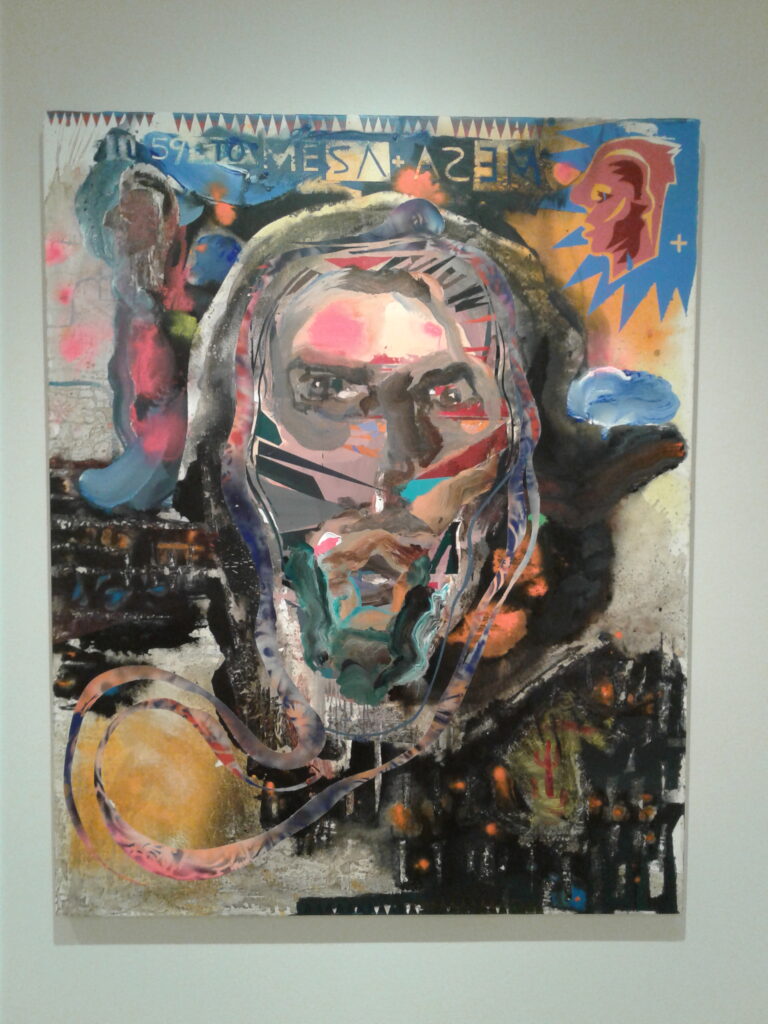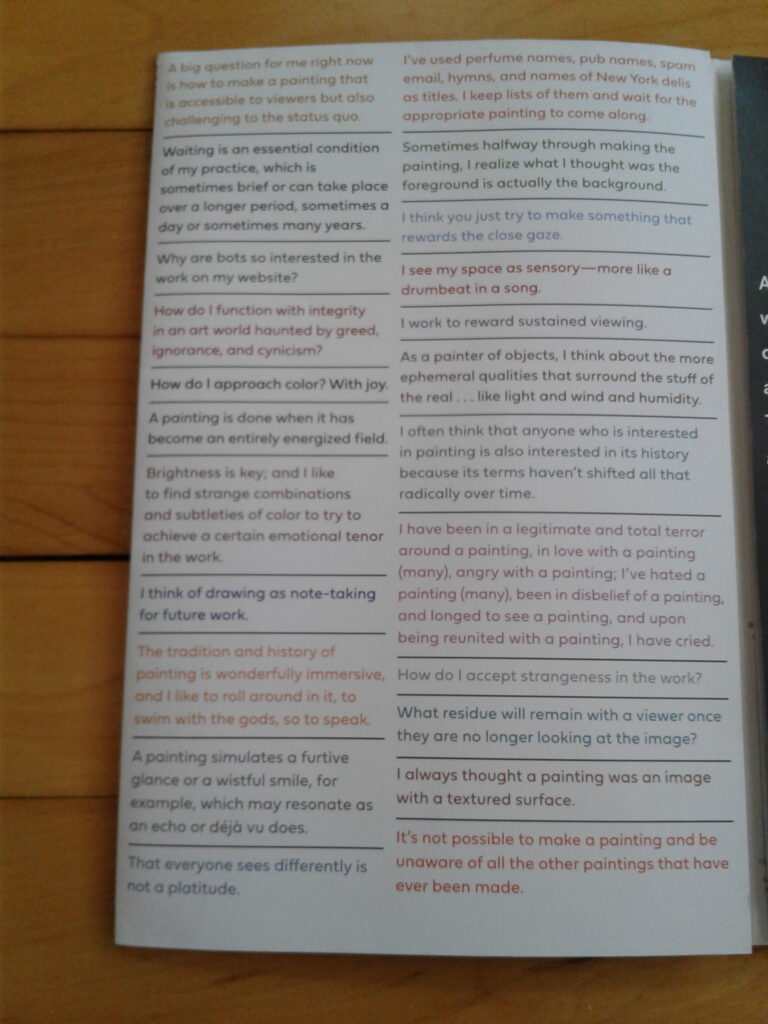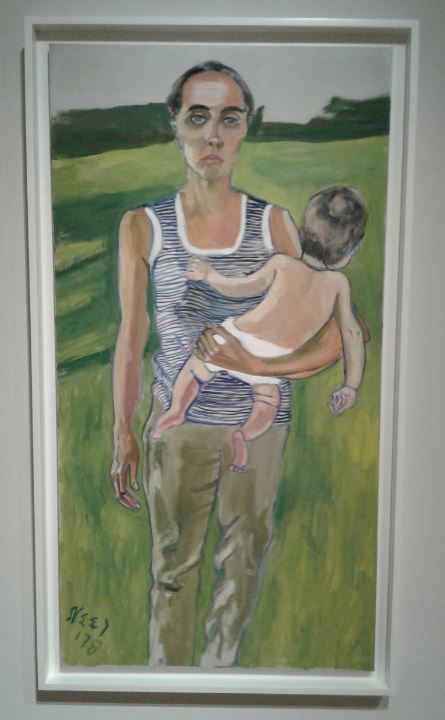or as the handout suggests: “Explore recent works by 50 painters defining their field”.

50 Paintings…by 50 Artists…created in the past 5 years. So a bold and daring survey of contemporary painting by the Milwaukee Art Museum…something not necessarily expected from a regional art museum. But let’s face it, the average museum goer probably doesn’t visit local art galleries so isn’t exposed to contemporary work. And not only should we give kudos for MAM for putting on this show, but for also giving it the full PR and advertising support that they give to their blockbuster shows.
And at the time of this writing, MAM has a brief introduction to the show and I believe all of the images from the show on their web page. Here’s the link!!!! But let me share the museum’s statement around the show (just in case the link is removed at some point):
The landmark survey 50 Paintings features works created within the last five years by 50 international artists, highlighting the artistic trends in practice today. With paintings by artists including Amy Sherald, Cinga Samson, GaHee Park, Nicole Eisenman, Cecily Brown, and Peter Barrickman, the exhibition celebrates the medium’s continued relevance and aesthetic range, and invites visitors to engage in close looking and formulate their own assessments of trends in contemporary painting.
The 50 works presented in the exhibition demonstrate myriad approaches to the medium. Painting—as a form, a language, a practice—is the focus, and the survey format underscores the many concepts and strategies present-day artists employ. 50 Paintings offers visitors 50 distinct opportunities to experience this traditional art form shaped by the imaginations of artists influencing the direction of painting today.
50 Paintings was co-curated by Margaret Andera, senior curator of contemporary art, and Michelle Grabner, artist, curator, and Crown Family Professor of Art and Chair of Painting and Drawing at The School of the Art Institute of Chicago.
So thank you Margaret Andera and Michelle Grabner for taking on this daunting task.
“…and invites visitors to engage in close looking and formulate their own assessments of trends in contemporary painting.” Perfect…so I was excited to see this show. And with 50 artists each having only one piece on display, I expected a very engaging show. But I don’t think that it is. Given one piece per artist, every piece would be the artist’s best piece from the period. No, I didn’t expect an ‘Armory Show’, but usually any and every show that I see, whether old master or contemporary gallery or even art fair, presents something that inspires me in some way. That just didn’t happen here. And I spent some time looking at it…at least an hour on my first visit. And I photographed some of the work that I thought worked and some of the work that didn’t. And I was disappointed and thinking that maybe I had an off day, I revisited the show and spent some more time with the work and took a few more photos. But my reaction was the same. On this second visit I spent about 20 minutes with the art before a museum employee said to me, you’ve spent some time looking at this show, what do you think…and I replied with a variation of my statement in the headline, that after decades of the art press and art critics claiming that painting was dead, the museum had finally proven it with this show.
Now, just because this is a show of contemporary painting, don’t be fooled into thinking that the artists are minty fresh MFA graduates. No, the painters here have had decades of experience, have certainly considered western art history, have dabbled in or played with the ‘isms’ of the 20th Century, and have certainly been influenced by other contemporary art. Just a quick scan of the brochure would indicate the youngest artist was born in 1990. So certainly this cohort has selected the media, methods, and styles that give voice to their vision.
[UPDATE: March 21, 2024: I originally viewed the show on Thursday March 14, 2024. Over the weekend I talked with a painter who had seen it on Friday. Then I revisited the show on Sunday March 17th. The painter read this article after I posted it last night and wondered why I wasn’t more direct in writing about the show compared to what I had said in conversation. So: I think that there is a lot of bad painting in this show. Not in the sense of the Bad Painting movement of the 1970s, although one or two of these paintings might fit into that genre. I am not sure that was intentional. But bad painting. I don’t see the craftsmanship that I would expect from work in a museum show. I don’t see the design or mastery of the media that I expected. Technique seems to be lacking. Color, although abundant, doesn’t work for me. Some of the paintings seem to be overworked to the point the life has been taken out of them. To me it seems that The Emperor Has No Clothes.]
One interesting side note. The brochure also includes responses from the artists to a number of questions posed to them. They make interesting reading but they were allowed to reply anonymously. I am not sure why anonymous was the way to go, but after reading the responses, I would have been very interested in tying them back to the actual paintings to see how the artist was actually articulating their thought(s). Here is the full spread of the answers. Hopefully you will be able to enlarge it enough to read. If not, I will also include the half page versions at the end.

I encourage the Milwaukee Art Museum to continue curating similar surveys in the future. Maybe every three to five years? It is a worthwhile endeavor…
As I said earlier, the paintings from this show can be seen here for as long at the page is available on the Milwaukee Art Museum web page. But I am going to include a few of the photos that I took here as well. My best photos but a combination of paintings that I liked and didn’t like. I am not going to say which is which.











and as promised, the two other views of the anonymous responses to questions about painting.


article © 2024 The New World Digs
















